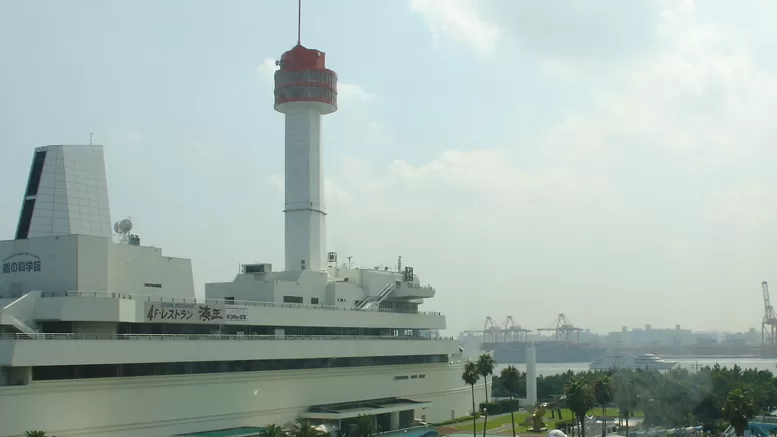The Museum of Maritime Science, or Fune-no-Kagakukan as it is known in Japanese, is a must-visit for maritime enthusiasts. Even the building itself is shaped like a giant ship, setting the tone for what’s inside. The museum features several levels of interactive exhibits, a large outdoor area, an observatory, and even a seaside pool, which opens during summer—making it a hugely popular attraction during the warmer months.

The museum boasts a wealth of fascinating displays, offering a comprehensive look at humanity’s relationship with the ocean. The lower levels focus on engineering and ship design, with exhibits on shipbuilding, propulsion systems, and naval architecture. There is also a hall dedicated to maritime symbols, as well as meeting and conference facilities.
The upper decks showcase sailing and naval history, featuring an impressive collection of Japanese sea vessels, including submarines, ferries, supertankers, container ships, and traditional wooden boats. One of the highlights for visitors—especially children—is the radio-controlled boat corner, where they can steer miniature ships across a large pond.
The museum grounds are home to several large-scale historical artefacts, marking significant milestones in Japan’s maritime heritage. While most of the information is in Japanese, many of the exhibits are visually engaging and easy to understand. One of the standout attractions is a historic ship moored nearby—the Soya. Built in 1938, this cargo icebreaker was Japan’s first Antarctic observation vessel. Other notable outdoor exhibits include a submarine, the main battery of the battleship Mutsu, and a superconducting electromagnetic propulsion system developed for the Yamato 1, an experimental craft from the early 1990s.
The museum also features a well-stocked gift shop, a café, and a restaurant, making it a great place to relax after exploring the exhibits. A complete visit typically takes around an hour.
The Museum of Maritime Science has its own station on the Yurikamome Line, Fune-no-Kagakukan (U-08). Another unique way to reach the museum is by taking the Water Bus, which departs from Hinode Pier, also accessible via the Yurikamome Line (U-04). While in Odaiba, keep an eye out for the free shuttle buses, which loop around the waterfront precinct’s attractions. Simply hop off at the massive cruise-liner-shaped building to reach the museum.
UPDATE:
The museum temporarily closed for renovations some time ago while keeping some attractions open like the Soya that in moored nearby. Currently, it looks like the museum has now closed permanently. The Yurikamome Line station that once bared the name of the museum is now named after the neighbouring Tokyo International Cruise Terminal.
Official Website:
http://www.funenokagakukan.or.jp/
